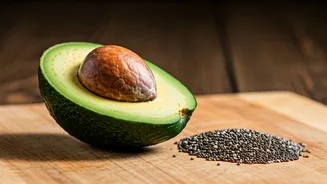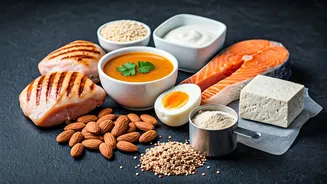Quantity Matters First
The initial step towards maintaining fitness while relishing food is to manage the amount you consume. This strategy involves carefully considering portion
sizes and being conscious of the food placed on your plate. Being mindful helps prevent overeating, a common hurdle for those who appreciate food. Try using smaller plates to trick your mind into eating less, and always measure out servings to avoid unnecessary consumption. By controlling the amount of food, you automatically reduce your calorie intake. For example, if you love pasta, opt for a smaller portion size and supplement it with a large salad or steamed vegetables to stay fuller for longer without increasing calorie count significantly. This initial strategy helps you to keep track of your daily calorie balance, crucial for sustaining a healthy lifestyle while enjoying food.
Manage Food Frequency
Next, controlling the frequency of your meals and snacks is essential to keep fitness goals on track. This involves planning your meals ahead to avoid impulsive eating, especially during times when you're most susceptible to hunger. For instance, avoid frequent snacking between meals by organizing your day and setting specific times for eating. You can pack healthy snacks to ensure you have good choices available, or you could drink water when you feel hungry to curb your appetite before the next meal. In addition, try to eat meals at regular intervals. This can help stabilize blood sugar levels and help avoid extreme hunger that leads to overeating. Sticking to a disciplined schedule allows your body to regulate its natural hunger cues, preventing you from consuming extra calories without intention.
Exercise is Non-Negotiable
Incorporating regular physical activity is an undeniable part of maintaining fitness and enjoying food. Exercise helps to burn calories, boost metabolism, and improve overall health. Engage in activities you enjoy, like brisk walking, dancing, or playing a sport. Set attainable goals, beginning with 30 minutes of moderate-intensity exercise most days of the week, and gradually increase intensity and duration. If time is a constraint, breaking the exercise into smaller segments throughout the day can also bring good results. High-intensity interval training (HIIT) is particularly effective for those with limited time. Prioritize exercises that use multiple muscle groups, such as squats, lunges, and push-ups, to maximize calorie expenditure and improve muscle strength. Consistent exercise not only assists in burning calories consumed through food, but it also improves the body's metabolism.
Monitor Your Metrics
Monitoring key body metrics is crucial for tracking your progress and understanding how your body responds to your diet and exercise habits. This can include regular weigh-ins, measuring body fat percentage, and taking measurements of your waist, hips, and other body parts. Recording your progress helps you stay motivated and make necessary adjustments to your diet or exercise routine. Tools like fitness trackers and apps can provide detailed insights into your activity levels, sleep patterns, and calorie intake. The data collected can reveal patterns. For example, if your weight plateaus despite consistent exercise, you might need to re-evaluate your calorie intake or the type of exercise you're doing. By monitoring, you gain a clear picture of your body's response, allowing informed decisions on your path to fitness.













